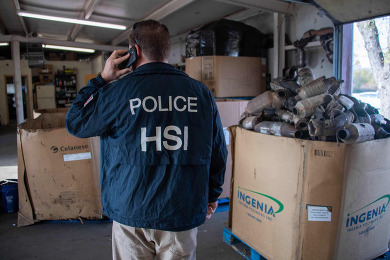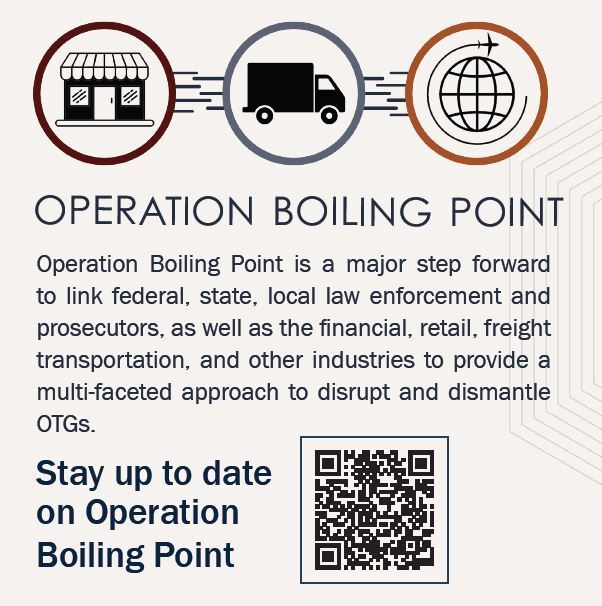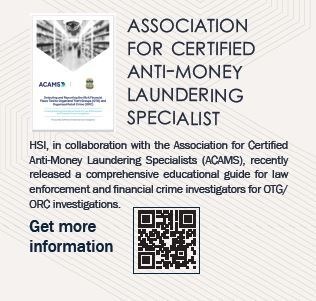Understanding Organized Theft Groups
Organized Theft Groups (OTGs) are sophisticated criminal organizations that profit from illegally obtaining goods that are later sold for economic gain. OTGs are known to profit from Organized Retail Crime (ORC), cargo theft, and other theft and fraud-related criminal activities. OTGs can be involved in a myriad of other crimes including, but not limited to narcotics trafficking, human trafficking, money laundering, and even terrorism. It is important to understand that this criminal activity is Organized Crime.
Homeland Security Investigations (HSI) defines ORC as “the association of two or more persons engaged in illegally obtaining items of value from retail establishments, through theft and/or fraud, as part of a criminal enterprise.”
According to the 2021 joint report released by the Retail Industry Leaders Association (RILA) and the Buy Safe America Coalition, in 2019, nearly $70 billion in goods were stolen from retailers. As staggering as this number is, it doesn’t account for loss related to cargo theft nor the uptick in ORC during the COVID-19 pandemic. In 2022, theft from retailers has increased to approximately $72 billion in losses according to the National Retail Federation’s (NRF) 2023 Retail Security Survey,
ORC is not just “shoplifting”, and these crimes are not victimless. In addition to the growing number of thefts that turn violent, consumers, local communities and businesses bear the costs of rising prices. These thefts are detrimental to both businesses, small and large alike, and the overall economy as they pose both societal and health risks to the community.
Estimates reveal ORC costs federal and state governments nearly $15 billion in lost tax revenue, not including lost sales taxes. It is estimated that the average American family will pay more than $500 annually in additional costs due to the impact of ORC.
ORC is a low-risk, high-reward income stream for domestic and transnational criminal organizations (TCO) that greatly impacts inter-state and international commerce and the overall economic security of the United States. The proceeds from the sale of these stolen goods often funds other criminal activities such as labor, arms, and drug trafficking.

HSI combats OTGs by targeting organizations profiting from these systemic and orchestrated thefts. HSI is focused on building and furthering partnerships with multiple industries to include retail, freight transportation, banking, and other business sectors, which may be targeted and/or used by OTGs to facilitate their criminal activities such as laundering criminal proceeds, transporting/exporting stolen goods, etc.
In June of 2022, in an effort to combat these TCOs, HSI’s initiated Operation Boiling Point (OBP). In cooperation with retailers and other private-sector stakeholders as well as state, local, and federal law enforcement agencies, HSI developed and distributed public facing information to bolster knowledge and awareness of ORC and highlighted HSI’s resources and capacity to combat this growing problem.
Looking forward, under Operation Boiling Point 2.0, HSI is excited about the potential of the INFORM Consumers Act to substantially reduce the fencing of stolen goods through online marketplaces. The INFORM Act brings transparency to online marketplaces by requiring them to verify the identities of high-volume third-party sellers.
For more information on HSI’s Operation Boiling Point please visit the following link or scan the QR code in the: Operation Boiling Point takes on Organized Theft Groups | ICE

The typical ORC organization runs the gamut from South American Theft Groups (SATG), which may be comprised of Chileans, Columbians, or Venezuelans; to Eastern European, Romani, or Domestic groups committing a wide range of smash and grab, quick change, return fraud or account takeover schemes. One popular scheme committed by SATG organizations involves SATG members engaging in mass mobile phone theft at outdoor music events. The stolen or “boosted” mobile phones are then collected and either sold to pawn shops or on E-Commerce sites and the proceeds laundered out of the United States or the boosted mobile phones are packaged and shipped to be sold overseas in a trade-based money laundering typology.
In 2021, HSI co-authored an ORC Guide alongside the professionals at the Association of Certified Anti-Money Laundering Specialists (ACAMS). In addition to the 100,000 ACAMS members worldwide, this publication has been shared across varying industries as well as law enforcement. The guide will layout in detail how these groups operate and answer questions on their methodology.
The guide is available at the following link Organized Theft Groups and Organized Retail Crime | ACAMS or scan the QR code in the below picture.
HSI expanded the role of its National Lead Development Center (NLDC) to serve as a point of contact for law enforcement agencies and private sector companies targeted by ORC to report information, conduct analysis, deconfliction, and to refer leads to HSI field offices. HSI developed a mechanism to ingest and analyze ORC-related data received from retail trade organizations and further coordinates with foreign partners to support domestic cases abroad. The NLDC is currently engaging with retail organizations such as the NRF, RILA, and the Loss Prevention Foundation (LPF).
HSI has engaged with all of the major E-commerce platforms having their representatives tour HSI’s NLDC and opened a direct working relationship for the two-way exchange of information. HSI will also adapt its Cornerstone outreach program to educate e-commerce and online marketplaces on the latest criminal trends.
The HSI NLDC has been instrumental in coordinating HSI investigations involving OTGs. To report criminal activity related to OTGs, please contact the NLDC at OTGcasesupportNLDC@hsi.dhs.gov.
 |
- Business has dramatically different amounts and patterns of currency deposits from similar businesses.
- Business is a warehouse, merchandise seller, or other similar business line with no evidence of purchasing goods or products.
- Size and frequency of currency deposits increase rapidly with no corresponding increase in credit transactions.
- Member conducts multiple currency deposits to various accounts that appear unrelated.
- Business is a shell company, registered in a high-risk national (e.g. Delaware or Wyoming) or high-risk international jurisdiction, and has structured ultimate beneficial ownership below standard reporting of 25%.
- Cryptocurrency exchange deposits that significantly exceed the stated income on account applications with no identifiable source. Further due diligence yielded information that the customer has an extensive criminal history.
- Business account activity that is inconsistent with expected business expenditures and income. Internet searches fail to support the client’s stated business.
- Pattern of cash deposits in a geographic location away from the customer's residence, rapidly followed by cash withdrawals in similar amounts much like drug trafficking or other illegal activity.
- Online searches indicate that buyer and seller have identical addresses with the same individuals as registered agents.
- Check payments issued to multiple individuals for which no relationship or lawful purpose can be established.
- None of the checks in the business account note the purpose in the memo section.
- Checks written from the business account payable to cash are deposited in principal’s personal accounts.
- Wire transfers where no business relationship can be established between the customer and the originator of the wire.
|









